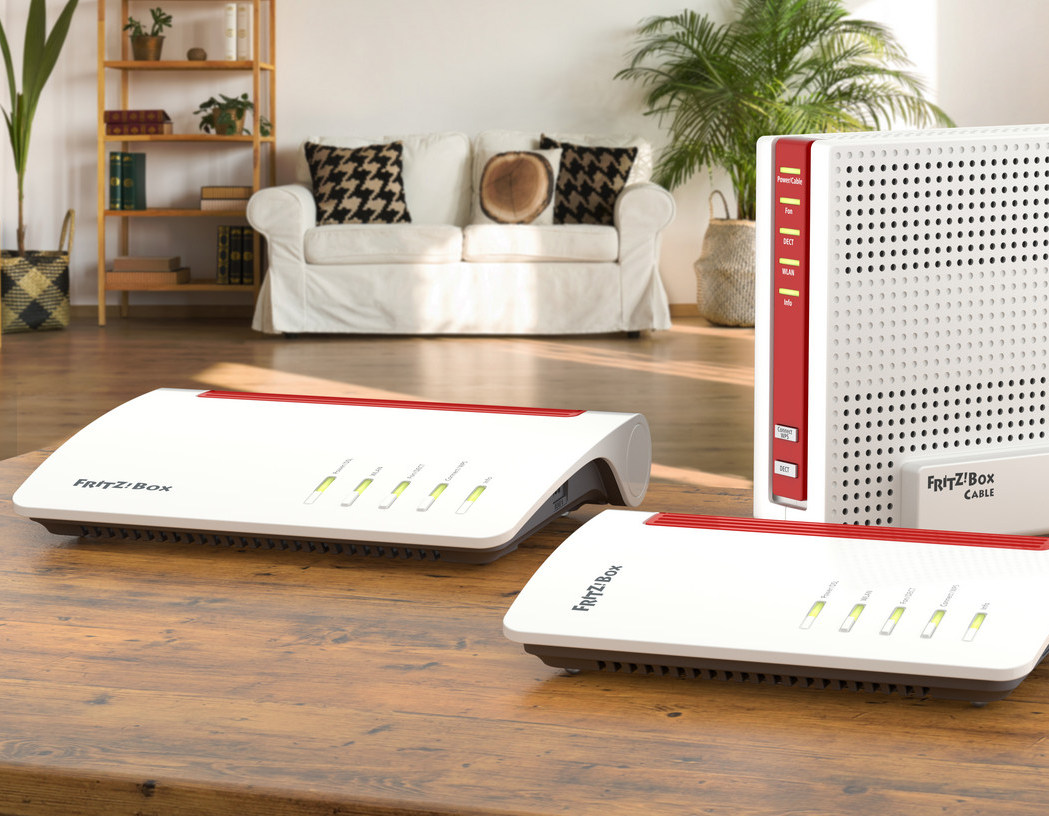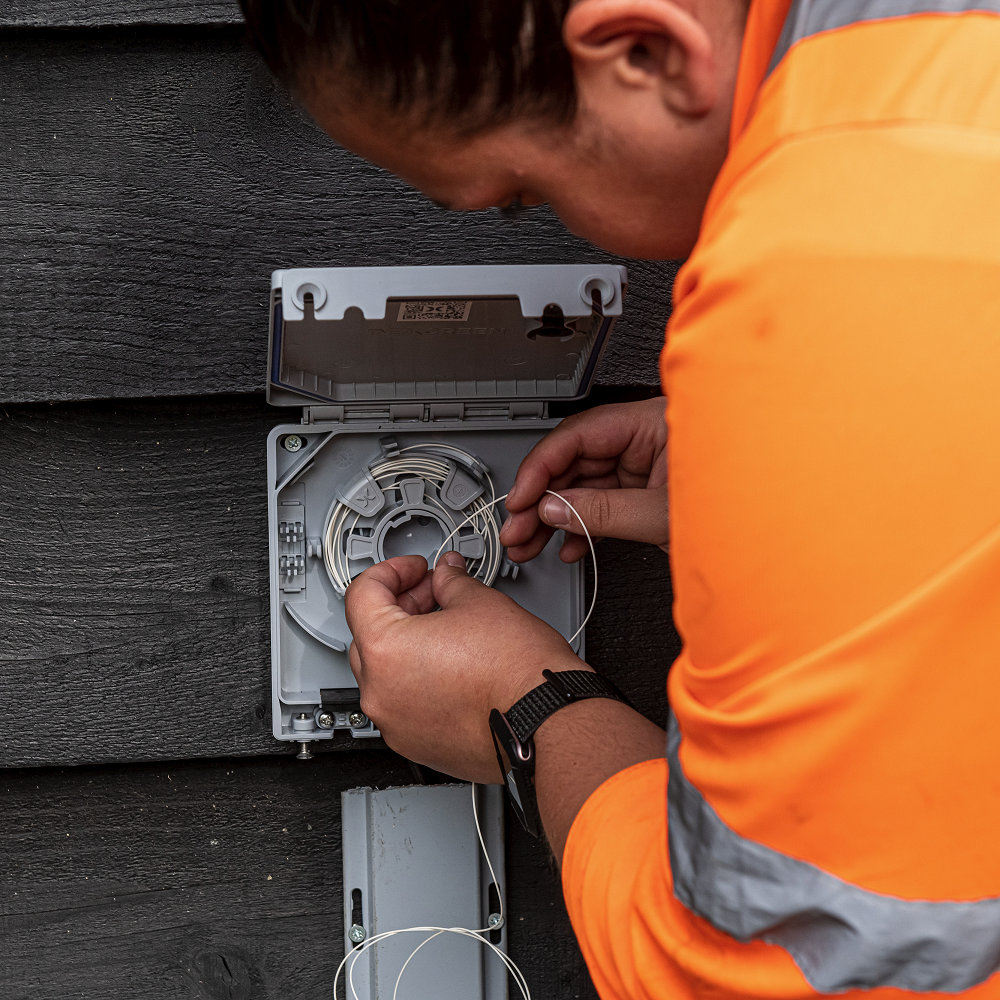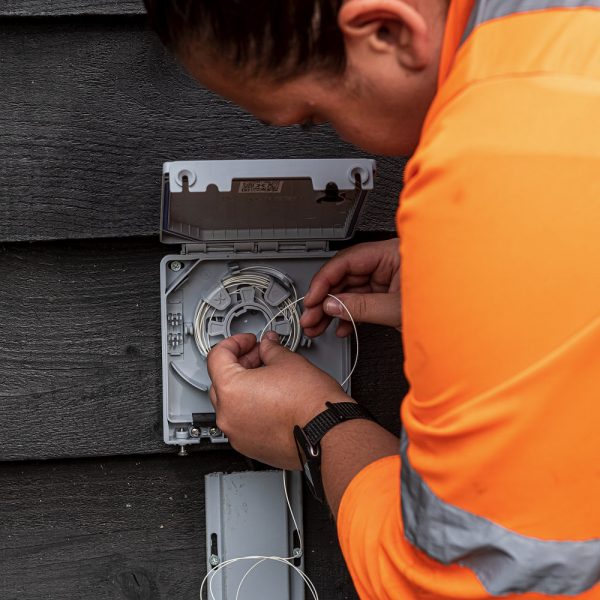AVM Talks Broadband Routers in a Time of Chip Shortages and COVID

In a new interview AVM, which is a well-known German manufacturer of home networking products (e.g. FRITZ!Box broadband routers for UK ISPs), has spoken to ISPreview.co.uk about how they’re responding to some of the year’s biggest challenges – from COVID-19 to 6GHz WiFi and a global shortage of semiconductor chips etc.
AVM was founded during 1986 in Berlin (Germany) and has been busy growing its influence ever since. The company now claims to be one of the top two manufacturers of broadband devices in Europe and holds an impressive market share in their home country. A number of UK ISPs, such as Zen Internet, have also adopted their routers after the manufacturer became popular with enthusiasts.
However, the past few months have also been some of the most turbulent in living memory for the tech sector, which has struggled with COVID-19, a shortage of semiconductor chips, issues caused by the post-Brexit UK EU trade agreement and the introduction of new WiFi technology.
Suffice to say, we were curious to know how AVM were coping with all of these challenges, as well as how they perceived the future direction of consumer router technology. Thankfully, the company’s UK Sales Manager, Matthew Tyler, was happy to help answer the myriad of questions that we threw his way.
The Interview
1. At a time when router manufacturers, including AVM, are already starting to ship devices that can cope with multi-gigabit Wi-Fi speeds via the latest 802.11ax (Wi-Fi 6) standard, why is it that the physical LAN port on the back of so many broadband routers has remained hobbled to just 1Gbps on almost every model we see?
The situation is starting to become increasingly relevant as more FTTP broadband ISPs are beginning to launch 2Gbps, 3Gbps and even 10Gbps packages in the consumer space. It’s not like faster Ethernet LAN standards than 1Gbps haven’t been around for a long time already.
ANSWER:
With the welcomed growth in FTTP infrastructure, and the challenges we’ve all been facing with working from home, the importance of the home gateway has never been greater than today. The competitive router market still requires careful calculations of cost and performance.
We began Q1 2020 by announcing our roadmap for Fiber and Wi-Fi 6 routers with the launch of our FRITZ!Box 6660 with an integrated DOCSIS (Data Over Cable Services Interface Specification) 3.1 cable modem. Since then we have been working on other new Wi-Fi 6 routers: 7530 AX, 5530 AX, and with a few delays the 7590 AX, currently in modest volumes to the German market only.
These will be followed later this year by the 4060, 5590, 6690 market launches – all are high-end Wi-Fi 6 multi-gigabit LAN/WAN routers – and the Mesh Wi-Fi FRITZ!Repeater 6000. All of these routers have a platform with a 2.5 Gbs WAN/LAN port and up to four additional 1 Gbs LAN ports, with powerful processors and memory for allocating multi-gibabit bandwidth throughout the home network.
We’ve had a few delays with the rollout this year but with in-house ingenuity and the years-long partnerships with our suppliers and manufacturing partners, we’re managing to keep pace with our game plan.
2. Speaking of 802.11ax and multi-Gigabit speeds, a number of countries like the UK and USA have approved the 6GHz band for use in Wi-Fi networks (Wi-Fi 6E). What sort of extra challenges and considerations do you have to make when introducing an entirely new band like this into your hardware, given that for many years you’ve only had to design new kit for the 2.4GHz and 5GHz bands? Plus, when might we actually see a 6GHz router from AVM?
ANSWER:
It’s very exciting for us to see the allocation of the 6GHz band, the first new band since the introduction of 5GHz (11ac) nearly ten years ago.
AVM has been developing Wi-Fi hardware for a number of years and the next stages are eagerly anticipated, to an already well established branch of our engineering department.
We have had strong in-house radio competency for quite a long time. We started with Bluetooth, and soon added DECT, Wi-Fi 2.4, and Wi-Fi 5 Ghz integration. Yes, switching to 6Ghz means different antennas, different test-devices and different interference, but we have a number of talented people working in our HF-department, all eager to apply the broader spectrum to our Wi-Fi routers.
An extra challenge will be for our marketing team to help distinguish the meaning of Wi-Fi 6 (11ax) and Wi-Fi 6E (inclusion of 6 GHz band, in addition to 2.4 and 5 GHz).
3. While we’re on the topic of Wi-Fi, perhaps you can help to settle a debate. We see a lot of routers with external screw-in wireless antennas (often several of them stick out the back – with adjustability), and others that stick to internal solutions. The assumption is often that external screw-in antennas should be better for coverage and performance in the home, but in our experience, this isn’t always the case.
Often it can be very hard to perceive much difference between the two methods, but equally we don’t have a true like-for-like platform to test with. AVM tends to make them internal, so what are your thoughts on this and have you conducted any studies to support the design decisions here?
ANSWER:
Over the years, there have been many iterations of design to optimise the internal antenna layout respective to the specific Wi-Fi chipset. Besides the widely accepted aesthetic appeal of a cleaner router design, the omnidirectional character of internal antennas is better suited for residential in-house coverage.
The overwhelming majority of customers want a simple Wi-Fi set up, and internal antennas (up to 12 antenna on a triband 4×4 Wi-Fi router/extender) have the advantage of not needing any attention or manual alignment, and have the added advantage of not breaking off, hanging loose or going lost.
The hard-featured external antennas can be helpful for focusing the Wi-Fi beam to a specific client’s direction. This is usually unnecessary for residential environments.
4. When it comes to broadband routers, one of the hottest debates of recent times has tended to centre on the issue of firmware updates, particularly for security purposes (patching vulnerabilities etc.). Sadly, some manufacturers tend to release a new model, put out one or two firmware releases, and then completely forget about the device.
What sort of approach does AVM take when it comes to tackling vulnerabilities and adding features via firmware to older routers. And how long (in years) do you think is right for a router manufacturer in the consumer space to continue providing updates?
ANSWER:
We strive to maximise the service life of our routers. Fresh firmware updates make ownership so much more fun, secure, and lends reassurance when reaching for this brand again in the future. It is our commitment to support these products as long as we can.
Sometimes that might not be possible due to external constrains (for example, when a chipset is no longer supported or the manufacturer of that chipset no longer exists), but our goal is to deliver software with new features and bugfixes for as many years as possible. You can see that we often continue to update the software long after production of the model has been discontinued.
For example, FRITZ!Box 7490 was launched in 2013 and we will be releasing the new FRITZ!OS in the next few weeks.
Flick over to page 2 to continue this interview.
Mark is a professional technology writer, IT consultant and computer engineer from Dorset (England), he also founded ISPreview in 1999 and enjoys analysing the latest telecoms and broadband developments. Find me on X (Twitter), Mastodon, Facebook and Linkedin.
« The Difficulties of Living at the Edge of “Superfast Broadband”
Latest UK ISP News
- FTTP (5538)
- BT (3518)
- Politics (2542)
- Openreach (2300)
- Business (2267)
- Building Digital UK (2247)
- FTTC (2045)
- Mobile Broadband (1978)
- Statistics (1790)
- 4G (1669)
- Virgin Media (1625)
- Ofcom Regulation (1467)
- Fibre Optic (1396)
- Wireless Internet (1392)
- FTTH (1382)


























































As a user of AVM product , I have nothing but good to say . I mesh networks setup and wifi through out the the house. But with with working from home becoming more important . These routers lack VLANS / and individule network monitoring.
As indicated in this artical LAN ports with only 1GBS could soon been outed , with FTTP already reaching beyond 1GBS speeds faster CPU’s and More on board memeory within routers are needed.
AVM came from an enthusist era , but we now need to start heavly monitoring these routers, and report back work related usage or internet, for maybe tax related claims etc.
All in All at this point in time , i rarley reboot my router.
‘HMRC say that if the employee is already paying for a connection before starting working from home then this is an existing expense and cannot be reimbursed tax-free. If, however, the employee is not connected to broadband and needs a connection to work from home, then this would qualify as an additional cost which the employer could reimburse tax-free.’
No need to start running a flow collector thankfully.
No need for VLANs to segment a work machine. Between software firewall blocking everything incoming and a VPN, with extra touches such as a user agent to cloud security services, normal routers are fine.
I’ve never really considered their products before, but I just thought after reading this I’d take a look.
An integrated DECT hub is indeed a very useful feature in the world of VoIP
I used their router for a while as a Zen customer. It was okay. At the time it lacked “data accounting” — the feature to count bandwidth usage and present monthly or weekly totals by device in the network. Thry had a rudimentary total bytes counter per day/week/month iirc.
Other than that, it was a pretty good device. A lot of settings for pros to control which were no use to me, but I could safely ignore :), and a stable device.
I didn’t give them a thought when I lter upgraded to a mesh system because I didn’t think of them as mesh wifi vendors and they aren’t available to buy in most retailers in the UK.
How is Zen lately? I’ve been considering them as CityFibre are cabling my street right now…..but recent comments online suggest they’ve gone down hill.
I’ve emailed their customer service team 3 times this year with some pretty basic questions and i’ve not had a single reply. Its concerning me enough to re-consider vodafone!
More a reply to Ian, I have been with Zen for a few months now, and just had an issue with slamming. I’ve no idea who the other ISP was who were trying to take over my line, but zen emailed promptly to let me know about the ‘cancellation’ of my service, so I was able to act on it quickly. When I called Zen they were really helpful and have sorted things out. I can’t comment about response times to emails, but I’m very pleased with their service to this point. If you want to switch to Zen they operate a referral system where we’d both get a £40 shopping voucher. I’m not sure if I’m allowed to share it here though.
I had significantly better FTTC sync bandwidths – 45Mbps became 55Mbps – when I swapped a Draytek router for a Zen-provided AVM router.
But it lacks whistles and bells so I use it as a modem sitting behind PFSense.
I really think the writing is on the wall for cheap branded consumer routers. You’re going to typically get better performance(especially on VPN) and features by moving to some distro like OPNsense/pfSense/Untangle etc. Want 10Gb or 2.5Gb WAN/LAN port? Just stick in a new network card.
I disagree, I think actually it’s going the other way.
10 years ago it was hard to find consumer branded routers that were much better than doorstops, whereas for the average user today a BT Smart Hub is actually not a bad bit of kit, it has Gbe LAN, supports a really easy to use Mesh system out of the box, and it’s nearly 3 years old now. No doubt the next iteration will bring in more recent standards (Wifi 6?), sure if you want to host a VPN or route certain devices through one at a router level – or add a good firewall then you need to look at different options, but the gains from doing that today are no where near what they were a few years back – and they’re not typical consumer requirements.
Very informative.
I use a VPN whole lot to allow me to watch UK programmes from abroad connecting to my Linksys 3200wrt home router. I find certain hotels restrict VPN traffic and I would really like to see more VPN protocols added such as Wireguard to get around the speed throttles.
Pleased to hear integration of the OTP, so that it allows FTTP terminating at the router rather than a OTP and one less plug to find too! All routers should have this. Virgin Media got to be the worst as this for FTTP. ONT to convert to DOCSIS, that’s a waste and allows introduction of possible noise! Like converting from German to English and back to German again.
i find it interesting they say they are looking at multi gig and yet only put 1 port on it that doubles as wan/lan
yes you can have multi gig internet but you can’t use it on your wired network sunshine only on wireless
Still that are not the only ones at fault in this, the cost of putting a multi gig port on is penny’s from what i have read, id happily spend a bit more for a wifi6E router with full 2.g/5 gig ports, for me that will future proof me for the next decade at least
Nice interview Matt! AVM great products, rock solid OS – Still Marmite for looks but I for one do like Marmite.
UK distributor located in Dublin. UK Reseller listed as Zen, who use an AVM product but are not a reseller. Amazon supply the product from Italy. No other suppliers in the UK that I can find. Are AVM serious about the UK market? I have been using a fritz box for 5+ years, but it’s becoming to much like hard work.